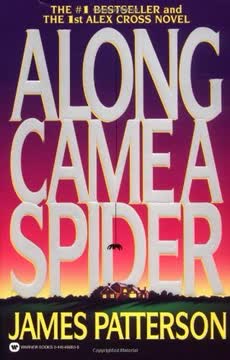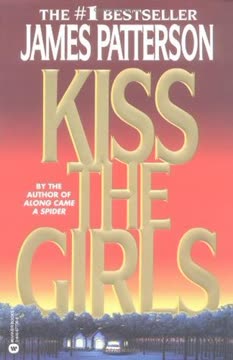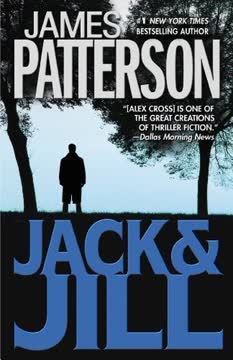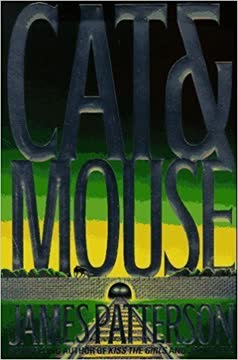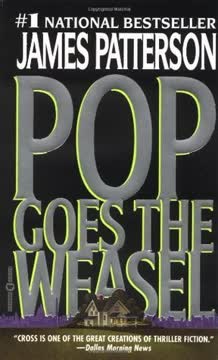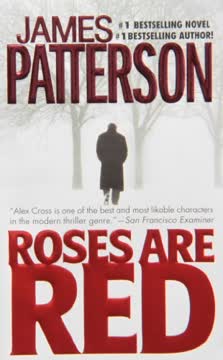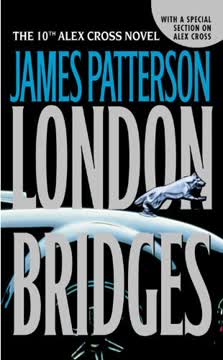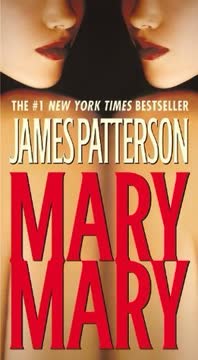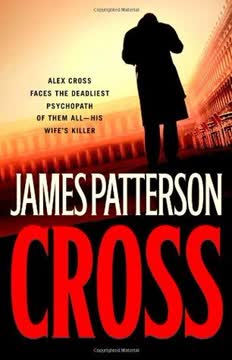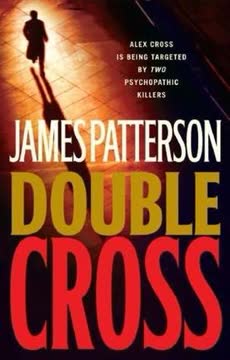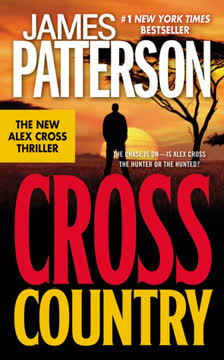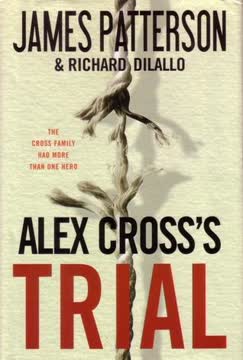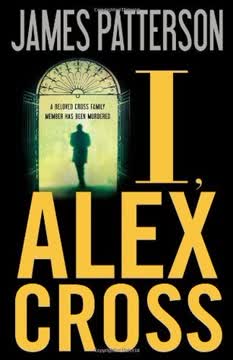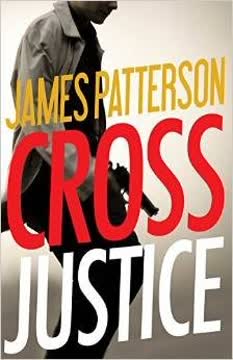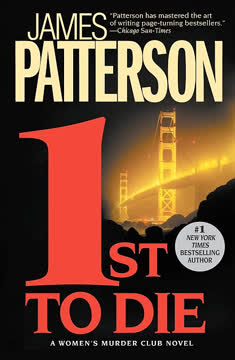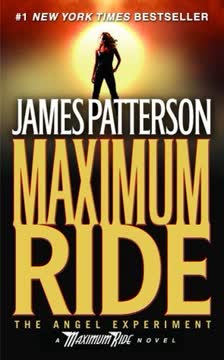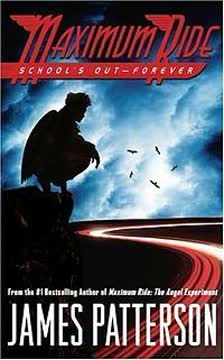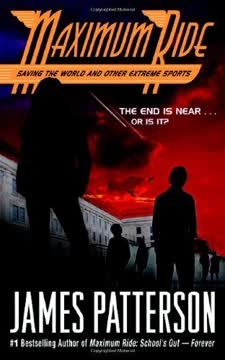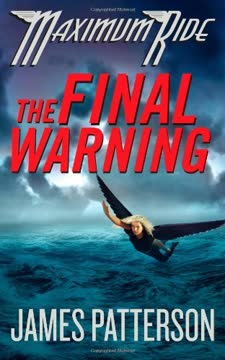Plot Summary
Murder Shatters Night's Silence
Alex Cross, a dedicated detective, is devastated when he discovers the brutal murder of his friend and FBI agent, Betsey Cavalierre. Her death is a grim scene, marked by violence and bloodshed. As Cross grapples with the loss, he receives a chilling phone call from the Mastermind, a taunting voice claiming responsibility for the murder and threatening Cross's family. This sets the stage for a tense and personal investigation, as Cross vows to catch the killer and protect his loved ones from the looming threat.
Mastermind's Sinister Night
The Mastermind, reveling in his own brilliance, plans a night of terror at Alex Cross's home. He envisions a twisted family triangle, reflecting his psychological obsession with Cross. Sneaking into the house, he plans to kill Cross's children and then Cross himself. However, he is thwarted by Cross's daughter, Jannie, who is awake and vigilant. Disappointed but undeterred, the Mastermind leaves, unseen, but more determined than ever to complete his deadly game, setting the stage for a high-stakes confrontation.
California's Sinister Shadows
In San Francisco, a couple is found brutally murdered, their bodies drained of blood. The scene mirrors Betsey's murder, suggesting a connection. Cross teams up with Inspector Jamilla Hughes to investigate, uncovering a pattern of similar murders across California. The killers appear to be part of a vampire cult, leaving a trail of blood and fear. As Cross delves deeper, he realizes the killers are more organized and deadly than he imagined, driven by a twisted ideology that challenges his understanding of the case.
Vampire Cult Unveiled
Cross and Jamilla Hughes uncover a dark subculture of vampire role-players, driven by rebellion, power, and eroticism. The killers are not mere role-players but true believers, following a leader known as the Sire. This revelation adds a layer of complexity to the investigation, as Cross must navigate this dangerous world to uncover the truth. The cult's influence is vast, and Cross realizes the killers are more organized and deadly than he imagined, pushing him to his limits as he races to stop them.
Bloodlust in the South
The killers strike again in Charleston, South Carolina, leaving another young couple dead and drained of blood. The pattern is unmistakable, linking the murders across the country. Cross and FBI agent Kyle Craig race to the scene, piecing together the killers' movements. The investigation reveals a network of murders spanning over a decade, each linked by the same gruesome method. Cross is haunted by the killers' boldness, striking in public places without fear of capture, and the urgency to stop them intensifies.
The Magicians' Deadly Illusion
Cross and the FBI set up surveillance on magicians Daniel and Charles, suspecting them of leading the cult. During a nightclub performance, the magicians captivate the audience with their illusions, but the FBI is ready to strike. As the show ends, the magicians attempt to escape, but the FBI closes in. In a dramatic confrontation, the magicians are captured, revealing they were pawns in a larger game controlled by the Sire. This capture is a turning point, leading to the unraveling of the cult's deadly network.
Cross's Family Under Threat
Cross is haunted by the threat against his family, feeling the weight of exhaustion and fear. His daughter Jannie provides a small comfort amidst the chaos, but the danger is ever-present. Cross is consumed by the need to protect his family and solve the case, delving into the patterns of the murders to find a connection. The pressure mounts as he realizes the Mastermind's threat is more real than ever, driving him to act quickly to prevent further tragedy.
The Sire's Dark Reign
Cross and Jamilla uncover the true identity of the Sire, the cult's leader orchestrating the murders. The Sire is revealed to be Peter Westin, a vampire expert manipulating the cult for his own twisted purposes. As Cross confronts Westin, he learns of the Sire's plans to expand the cult's influence and continue the killing spree. The confrontation is intense, with Cross determined to stop the Sire and bring justice to the victims. The Sire's reign of terror is finally brought to an end, but the threat of the Mastermind still looms.
Cross's Final Confrontation
Cross's investigation leads to a final confrontation with the Mastermind, revealed to be Kyle Craig, a trusted friend and FBI agent. In a tense showdown, Cross confronts Craig, who confesses to the murders and his obsession with Cross. The confrontation is a battle of wits and wills, with Cross determined to bring Craig to justice. In the end, Cross prevails, capturing Craig and ending the Mastermind's reign of terror. The resolution brings closure to the case, but the personal toll on Cross is profound.
Characters
Alex Cross
Alex Cross is a dedicated detective, deeply affected by the murder of his friend Betsey Cavalierre and the threat against his family. As he investigates the vampire cult, he uncovers a web of deception and betrayal. Cross is a loving father and grandfather, struggling to protect his family while solving the case. His determination and intelligence are tested as he faces the Mastermind, a killer who has been manipulating events from the shadows.
Mastermind (Kyle Craig)
The Mastermind is revealed to be Kyle Craig, a trusted FBI agent and friend of Cross. Craig is a master manipulator, orchestrating a series of murders and taunting Cross with threats against his family. His obsession with Cross drives him to commit heinous acts, all while maintaining a facade of friendship. Craig's intelligence and ruthlessness make him a formidable adversary, but his arrogance ultimately leads to his downfall.
Jamilla Hughes
Jamilla Hughes is a homicide inspector who teams up with Cross to investigate the vampire cult. Her intelligence and determination make her a valuable partner in the investigation. Jamilla's insights and resourcefulness help uncover the truth behind the cult's activities. She shares a mutual respect and understanding with Cross, working together to bring the killers to justice.
Peter Westin (The Sire)
Peter Westin is the Sire, the leader of the vampire cult. A vampire expert, Westin uses his knowledge to manipulate the cult's followers and orchestrate a series of murders. His twisted ideology and charisma make him a dangerous figure, but his arrogance ultimately leads to his capture. Westin's reign of terror is brought to an end by Cross and his team.
Betsey Cavalierre
Betsey Cavalierre was an FBI agent and close friend of Cross, brutally murdered in her home. Her death is a devastating blow to Cross, fueling his determination to catch the Mastermind. Betsey's murder is the catalyst for the investigation, linking her death to a series of gruesome killings across the country.
Daniel and Charles
Daniel and Charles are magicians who become pawns in the Sire's deadly game. They are charismatic performers, using their illusions to captivate audiences while hiding their involvement in the cult. As the investigation unfolds, they are revealed to be manipulated by the Sire, ultimately captured by the FBI. Their capture is a turning point in the investigation, leading to the Sire's downfall.
Plot Devices
Vampire Subculture
The vampire subculture is a central element of the story, providing a backdrop for the murders. It is a world of rebellion, power, and eroticism, attracting those who seek an alternative lifestyle. The killers are true believers, using the vampire mythology to justify their gruesome acts. The subculture adds a layer of complexity to the investigation, challenging Cross to understand the killers' motives.
Mastermind's Deception
The Mastermind's deception is a central plot device, driving the narrative and creating tension. His ability to manipulate events and people, including Cross, adds complexity to the investigation. The Mastermind's identity is a shocking revelation, highlighting the theme of betrayal and the danger of misplaced trust.
Psychological Warfare
The psychological warfare between Cross and the Mastermind adds tension and suspense to the story. The Mastermind's taunts and threats create a personal stake for Cross, driving him to catch the killer. The mind games highlight the personal toll of the investigation, pushing Cross to his limits.
Analysis
"Violets Are Blue" by James Patterson is a gripping thriller that explores themes of deception, betrayal, and resilience. The novel delves into the dark world of a vampire cult, challenging the protagonist, Alex Cross, to navigate a web of lies and manipulation. The story highlights the personal toll of the investigation on Cross, as he grapples with the threat against his family and the betrayal of a trusted friend. Patterson weaves a complex narrative, using psychological warfare and a chilling subculture to create tension and suspense. Ultimately, the novel is a testament to Cross's determination and intelligence, as he overcomes personal and professional challenges to bring justice to the victims. The book serves as a reminder of the dangers of misplaced trust and the resilience required to confront evil.
Last updated:
FAQ
Synopsis & Basic Details
What is Violets Are Blue about?
- A Personal Vendetta Unfolds: Violets Are Blue plunges Detective Alex Cross into a deeply personal and terrifying investigation after his friend and FBI agent, Betsey Cavalierre, is brutally murdered. A taunting caller, identifying himself as "the Mastermind," claims responsibility and threatens Cross's family, setting a chilling tone for the escalating conflict.
- West Coast Horror Spree: The narrative expands to a series of gruesome, ritualistic murders across California and Nevada, where victims are found drained of blood and bearing savage bite marks, leading Cross to team up with San Francisco Inspector Jamilla Hughes to uncover a disturbing "vampire" subculture.
- A Twisted Game of Cat and Mouse: As Cross and Hughes pursue the elusive killers, they uncover a network of individuals seemingly operating under the influence of a charismatic leader known as the Sire, while the Mastermind continues his psychological torment of Cross, hinting at a deeper, more personal connection to the detective's past cases.
Why should I read Violets Are Blue?
- Deep Psychological Thriller: Readers seeking a novel that delves into the twisted minds of its antagonists will find Violets Are Blue compelling. It explores themes of narcissism, obsession, and the nature of evil through the Mastermind's chilling self-analysis and the cult's dark ideology, offering a profound psychological analysis of its villains.
- Patterson's Signature Pacing: The book exemplifies James Patterson's renowned fast-paced, short-chapter style, packed with cliffhangers and unexpected twists that keep the reader constantly engaged. This narrative choice enhances the sense of urgency and relentless pursuit, making it a quick yet impactful read.
- Exploration of Loyalty and Betrayal: At its core, the story is a powerful examination of trust and betrayal, particularly through Alex Cross's relationships. It highlights the emotional toll of police work and the profound impact when those closest to you are revealed to be your greatest adversaries, adding significant emotional depth to the suspense.
What is the background of Violets Are Blue?
- Emergence of Subcultures: The novel taps into the burgeoning Goth and vampire subcultures prevalent in the late 1990s and early 2000s, exploring how these alternative lifestyles, with their emphasis on rebellion and dark aesthetics, could be twisted into a justification for horrific violence, reflecting a cultural fascination with the macabre.
- Geographical Contrast and Symbolism: The story leverages distinct American cities—from the idyllic Golden Gate Park in San Francisco to the vibrant chaos of Las Vegas and the historic charm of New Orleans and Charleston—to create diverse backdrops for the murders. Each location subtly contributes to the atmosphere, contrasting beauty with brutality, and highlighting the killers' deliberate choice of "beautiful cities" (Chapter 46).
- Early 2000s Technology & Crime: The investigation relies on early 2000s technology, such as cell phone tracing (which the Mastermind expertly evades, Chapter 4), faxes, and the nascent use of the internet for criminal profiling and communication within subcultures. This grounds the story in its specific time period, showcasing the limitations and advancements of forensic science at the turn of the millennium.
What are the most memorable quotes in Violets Are Blue?
- "Nothing ever starts where we think it does." (Chapter 1): This opening line, repeated later by Cross (Chapter 108), serves as a profound thematic statement, foreshadowing the complex, deeply rooted origins of the Mastermind's vendetta and the unexpected twists that defy conventional understanding of crime. It encapsulates the novel's exploration of hidden motivations and long-held secrets.
- "If you hunt for the vampire, the vampire will hunt for you." (Chapter 26): This chilling adage, spoken by William Alexander and later echoed by Michael (Chapter 81), embodies the predatory nature of the cult and the Mastermind's game. It highlights the dangerous, reciprocal relationship between hunter and hunted, emphasizing the personal risk Alex Cross undertakes.
- "I wanted you to catch me, you asshole. What do you think of that?" (Chapter 115): Kyle Craig's final taunt to Alex Cross reveals the ultimate, perverse motivation behind his actions: a desperate need for recognition and validation from his perceived intellectual equal. This quote encapsulates the Mastermind's narcissistic personality and his desire for a grand, public confrontation, providing a shocking conclusion to his psychological warfare.
What writing style, narrative choices, and literary techniques does James Patterson use?
- Rapid-Fire, Short Chapters: Patterson employs extremely short chapters, often ending with cliffhangers, to maintain a relentless pace and build suspense. This technique, characteristic of his style, propels the reader forward, mirroring the urgency and chaos of Cross's investigation.
- First-Person Perspective with Occasional Shifts: Primarily narrated in Alex Cross's first-person perspective, the novel occasionally shifts to the Mastermind's internal monologue (e.g., Chapter 38, 54, 98) and the Alexander brothers' (e.g., Chapter 10, 18, 30). These shifts provide crucial insights into the villains' twisted psychologies and motivations, enhancing the psychological depth and narrative tension.
- Direct Address and Psychological Insight: Cross frequently addresses the reader directly, sharing his internal thoughts, fears, and profiling insights. This creates an intimate connection, drawing the reader into his mind and the complexities of the cases, while also showcasing his expertise as a forensic psychologist.
Hidden Details & Subtle Connections
What are some minor details that add significant meaning?
- The "Red Cross" Van's Irony: William and Michael's use of a "Red Cross" van (Chapter 11, 30) is a chilling detail. It symbolizes their perversion of aid and healing into instruments of death and bloodlust, allowing them to move undetected by masquerading as a benevolent organization while committing heinous acts.
- Mastermind's Self-Diagnosis: In Chapter 38, the Mastermind explicitly lists symptoms of "Narcissistic personality disorder" and "lacks empathy," directly foreshadowing Kyle Craig's identity and providing a clinical lens for his extreme behavior. This detail serves as a hidden clue for the astute reader, revealing the calculated nature of his madness.
- The Mill Valley Property Dispute: The detail that the murdered Mill Valley lawyers were involved in a lawsuit over the Santa Cruz ranch property (Chapter 86) subtly connects the seemingly disparate murder sprees. It suggests a deeper, long-standing motive for the cult's actions, linking the "vampire" killings to a tangible, real-world grievance beyond mere ritual.
What are some subtle foreshadowing and callbacks?
- Kyle's Early "Vampire" Remarks: Kyle Craig's casual remarks about believing in "vampires, ghosts, zombies" (Chapter 25) early in the investigation subtly foreshadow his deep involvement and twisted understanding of the cult. It hints at his own dark fascinations and his ability to blend into the very world he's supposedly investigating.
- Cross's Recurring "Coincidences": Cross's repeated assertion that he "doesn't believe in coincidences" (Chapter 41, 94) becomes a crucial callback. This internal mantra drives him to connect seemingly unrelated events, ultimately leading him to the shocking realization that Kyle Craig has been orchestrating events and stalking him for years, making the entire series of events a deliberate, personal attack.
- The Mastermind's "Triangles": The Mastermind's cryptic reference to "love and hate triangles" involving Cross and his family (Chapter 38) subtly foreshadows the deeply personal nature of his obsession. It hints at a complex, almost familial, dynamic that Kyle Craig later reveals, rooted in his own dysfunctional past and sibling rivalry.
What are some unexpected character connections?
- Kyle Craig's Link to Past Killers: The revelation that Kyle Craig knew and "hunted with" Casanova and the Gentleman Caller (Chapter 98, 114) is a shocking and unexpected connection. It retroactively recontextualizes previous Alex Cross novels, suggesting Kyle's long-standing involvement in a broader criminal underworld and his role in manipulating Cross's career.
- The Alexander Brothers' Commune Upbringing: William and Michael Alexander's background in a "California-dreaming hippies" commune (Chapter 10, 82) provides an unexpected origin for their extreme behavior. This detail explains their twisted sense of freedom, their comfort with nudity and violence, and their susceptibility to the Sire's influence, linking their psychopathy to a specific, unconventional upbringing.
- Peter Westin's "Real Vampire" Claim: Peter Westin's seemingly academic interest in vampires, culminating in his calm declaration "Yes. I am" a vampire (Chapter 27), is an unexpected twist. This connection reveals him not just as an expert, but as a central, manipulative figure within the cult, blurring the lines between academic study and dangerous belief.
Who are the most significant supporting characters?
- Nana Mama: The Moral Compass: Alex Cross's grandmother, Nana Mama, serves as his unwavering moral compass and emotional anchor. Her wisdom, fierce protectiveness of the children, and occasional blunt criticisms (Chapter 23, 58) ground Cross amidst the chaos, reminding him of his responsibilities beyond his detective work and highlighting the importance of family.
- John Sampson: The Steadfast Partner: John Sampson is Cross's loyal and physically imposing partner, providing both practical assistance and crucial emotional support. His unwavering friendship and willingness to protect Cross's family (Chapter 1, 95) stand in stark contrast to Kyle Craig's betrayal, emphasizing the theme of true loyalty.
- Kate McTiernan: A Recurring Victim/Survivor: Kate McTiernan, a survivor from a previous Alex Cross case (Casanova), reappears as a friend and potential target for Kyle Craig (Chapter 43, 112). Her resilience and continued connection to Cross underscore the long-term impact of his cases and the personal stakes involved for those in his orbit.
Psychological, Emotional, & Relational Analysis
What are some unspoken motivations of the characters?
- Cross's Guilt-Driven Protectiveness: Alex Cross's intense protectiveness of Jamilla Hughes (Chapter 19, 93, 94) is subtly motivated by his unspoken guilt and trauma over the deaths of his previous female partners, Patsy Hampton and Betsey Cavalierre. He subconsciously fears a repeat of past tragedies, driving his seemingly irrational actions.
- Kyle Craig's Need for Superiority: Kyle Craig's entire "Mastermind" persona and his elaborate game with Cross are driven by an unspoken, profound need to prove his intellectual and psychological superiority. His actions are a desperate attempt to validate his own perceived brilliance, stemming from deep-seated insecurities and a history of sibling rivalry (Chapter 38, 107).
- Cult Members' Search for Identity: Many of the "vampire" cult members, particularly the younger ones like Irwin Snyder (Chapter 50) and Anne Elo (Chapter 77), are implicitly motivated by a search for identity, belonging, and an escape from mundane reality. The cult offers them a sense of power, rebellion, and a twisted family structure that fills a void in their lives.
What psychological complexities do the characters exhibit?
- Cross's Burnout and Paranoia: Alex Cross exhibits significant psychological complexity through his struggle with burnout, exhaustion, and increasing paranoia (Chapter 24, 41, 93). The relentless nature of his work and the Mastermind's personal attacks blur the lines between professional duty and personal safety, leading to moments of self-doubt and a questioning of his own sanity.
- Kyle Craig's Functional Psychopathy: Kyle Craig is a chilling study in functional psychopathy, characterized by a grandiose sense of self-importance, lack of empathy, and manipulative tendencies (Chapter 38, 98, 115). His ability to maintain a facade of normalcy and friendship while orchestrating horrific crimes highlights the dangerous nature of his disorder, making him a truly terrifying villain.
- The Alexander Brothers' Sado-Erotic Bond: William and Michael Alexander display a complex sado-erotic bond, where violence and pleasure are inextricably linked (Chapter 10, 18, 33). Their upbringing in a commune, coupled with their inherent psychopathy, results in a twisted morality where inflicting pain and consuming blood are acts of ecstasy and self-fulfillment, showcasing a profound psychological deviance.
What are the major emotional turning points?
- Cross Missing Damon's Concert: Alex Cross's inability to attend his son Damon's choir concert (Chapter 23, 58) serves as a significant emotional turning point, highlighting the personal sacrifices demanded by his job. Nana Mama's blunt criticism and Damon's quiet disappointment underscore Cross's deep-seated guilt and his struggle to balance his professional and family life.
- Jamilla's Capture and Near-Death: Jamilla Hughes's capture and near-fatal hanging by William and Michael (Chapter 81-82) is a harrowing emotional turning point. It brings the threat of the cult directly to a beloved supporting character, intensifying the stakes for Cross and fueling his determination to rescue her, showcasing the brutal reality of the investigation.
- The Murder of Zach and Liz Taylor: The execution-style murders of Cross's close friends, Zach and Liz Taylor (Chapter 105), is a devastating emotional blow. This act, explicitly committed by Kyle Craig to inflict maximum pain on Cross, shatters Cross's remaining sense of security and transforms his pursuit of the Mastermind into a deeply personal quest for vengeance.
How do relationship dynamics evolve?
- Cross and Jamilla's Deepening Trust: The professional relationship between Alex Cross and Jamilla Hughes evolves from initial skepticism to one of deep trust, mutual respect, and unspoken affection (Chapter 19, 64, 75, 96). Their shared experiences in life-threatening situations forge a powerful bond, making her safety a personal priority for Cross.
- Cross's Strained Family Bonds: Cross's relationship with his children, Damon and Jannie, and Nana Mama, is constantly strained by his demanding job (Chapter 6, 23, 109). The novel explores his guilt and their longing for his presence, culminating in his decision to prioritize family, reflecting the evolving dynamic of a father trying to reconnect.
- The Twisted Bond of William and Michael: The relationship between William and Michael Alexander is portrayed as a deeply twisted, sado-erotic, and co-dependent bond (Chapter 10, 18, 33). Their shared history and mutual participation in violence create an unbreakable, yet perverse, connection that defines their actions within the cult.
Interpretation & Debate
Which parts of the story remain ambiguous or open-ended?
- The Full Extent of the Vampire Cult: While Peter Westin is captured, the novel leaves ambiguous the true global reach and long-term impact of the "vampire" subculture and its various "domains" (Chapter 27, 82). It's unclear if Westin's capture truly dismantles the entire network or if other "Sires" exist, leaving the potential for future threats.
- Kyle Craig's Ultimate Fate: Although Kyle Craig is captured and facing trial, the narrative leaves his ultimate fate open-ended (Chapter 116). Given his cunning and manipulative nature, and his past escapes, the possibility of his return or continued influence from prison remains a lingering ambiguity, fueling reader speculation about his future.
- Cross's Future Career and Relationships: The ending suggests Alex Cross will resign from the police force and hints at a potential new romantic relationship (Chapter 116). However, the long-term implications of these decisions, particularly whether he truly leaves police work behind and finds lasting personal happiness, are left for the reader to ponder, reflecting the ongoing challenges of his life.
What are some debatable, controversial scenes or moments in Violets Are Blue?
- Graphic Depictions of Violence and "Feeding": The novel's explicit descriptions of victims being "drained of blood," "bitten severely," and even "gnawed" on (Chapter 7, 18, 35) are highly controversial. These graphic details push the boundaries of typical thriller violence, raising questions about their necessity for plot versus their potential for gratuitous shock value.
- Portrayal of the Vampire Subculture: The depiction of the "vampire subculture" as a breeding ground for real-world violence and psychopathy (Chapter 27, 71) can be seen as controversial. It blurs the lines between fictional role-playing and actual criminal behavior, potentially misrepresenting or sensationalizing a real-world subculture.
- Kyle Craig's Psychopathy vs. Psychosis: A key debate revolves around Kyle Craig's mental state: is he a highly functional psychopath, as he claims (Chapter 38), or does his extreme behavior, particularly his uncontrollable laughter and elaborate fantasies, suggest a deeper psychosis (Chapter 104, 113)? This ambiguity challenges readers to interpret the nature of his evil.
Violets Are Blue Ending Explained: How It Ends & What It Means
- Kyle's Downfall: Narcissism as a Weapon: The novel culminates in Alex Cross outsmarting Kyle Craig by exploiting the Mastermind's greatest weakness: his insatiable narcissism and need for recognition. Cross records Kyle's full confession on his voicemail (Chapter 115), turning Kyle's desire to boast about his "masterpiece of
Synopsis & Basic Details
What is Violets Are Blue about?
- A Personal Vendetta Unfolds: Violets Are Blue plunges Detective Alex Cross into a deeply personal and terrifying investigation after his friend and FBI agent, Betsey Cavalierre, is brutally murdered. A taunting caller, identifying himself as "the Mastermind," claims responsibility and threatens Cross's family, setting a chilling tone for the escalating conflict.
- West Coast Horror Spree: The narrative expands to a series of gruesome, ritualistic murders across California and Nevada, where victims are found drained of blood and bearing savage bite marks, leading Cross to team up with San Francisco Inspector Jamilla Hughes to uncover a disturbing "vampire" subculture.
- A Twisted Game of Cat and Mouse: As Cross and Hughes pursue the elusive killers, they uncover a network of individuals seemingly operating under the influence of a charismatic leader known as the Sire, while the Mastermind continues his psychological torment of Cross, hinting at a deeper, more personal connection to the detective's past cases.
Why should I read Violets Are Blue?
- Deep Psychological Thriller: Readers seeking a novel that delves into the twisted minds of its antagonists will find Violets Are Blue compelling. It explores themes of narcissism, obsession, and the nature of evil through the Mastermind's chilling self-analysis and the cult's dark ideology, offering a profound psychological analysis of its villains.
- Patterson's Signature Pacing: The book exemplifies James Patterson's renowned fast-paced, short-chapter style, packed with cliffhangers and unexpected twists that keep the reader constantly engaged. This narrative choice enhances the sense of urgency and relentless pursuit, making it a quick yet impactful read.
- Exploration of Loyalty and Betrayal: At its core, the story is a powerful examination of trust and betrayal, particularly through Alex Cross's relationships. It highlights the emotional toll of police work and the profound impact when those closest to you are revealed to be your greatest adversaries, adding significant emotional depth to the suspense.
What is the background of Violets Are Blue?
- Emergence of Subcultures: The novel taps into the burgeoning Goth and vampire subcultures prevalent in the late 1990s and early 2000s, exploring how these alternative lifestyles, with their emphasis on rebellion and dark aesthetics, could be twisted into a justification for horrific violence, reflecting a cultural fascination with the macabre.
- Geographical Contrast and Symbolism: The story leverages distinct American cities—from the idyllic Golden Gate Park in San Francisco to the vibrant chaos of Las Vegas and the historic charm of New Orleans and Charleston—to create diverse backdrops for the murders. Each location subtly contributes to the atmosphere, contrasting beauty with brutality, and highlighting the killers' deliberate choice of "beautiful cities" (Chapter 46).
- Early 2000s Technology & Crime: The investigation relies on early 2000s technology, such as cell phone tracing (which the Mastermind expertly evades, Chapter 4), faxes, and the nascent use of the internet for criminal profiling and communication within subcultures. This grounds the story in its specific time period, showcasing the limitations and advancements of forensic science at the turn of the millennium.
What are the most memorable quotes in Violets Are Blue?
- "Nothing ever starts where we think it does." (Chapter 1): This opening line, repeated later by Cross (Chapter 108), serves as a profound thematic statement, foreshadowing the complex, deeply rooted origins of the Mastermind's vendetta and the unexpected twists that defy conventional understanding of crime. It encapsulates the novel's exploration of hidden motivations and long-held secrets.
- "If you hunt for the vampire, the vampire will hunt for you." (Chapter 26): This chilling adage, spoken by William Alexander and later echoed by Michael (Chapter 81), embodies the predatory nature of the cult and the Mastermind's game. It highlights the dangerous, reciprocal relationship between hunter and hunted, emphasizing the personal risk Alex Cross undertakes.
- "I wanted you to catch me, you asshole. What do you think of that?" (Chapter 115): Kyle Craig's final taunt to Alex Cross reveals the ultimate, perverse motivation behind his actions: a desperate need for recognition and validation from his perceived intellectual equal. This quote encapsulates the Mastermind's narcissistic personality and his desire for a grand, public confrontation, providing a shocking conclusion to his psychological warfare.
What writing style, narrative choices, and literary techniques does James Patterson use?
- Rapid-Fire, Short Chapters: Patterson employs extremely short chapters, often ending with cliffhangers, to maintain a relentless pace and build suspense. This technique, characteristic of his style, propels the reader forward, mirroring the urgency and chaos of Cross's investigation.
- First-Person Perspective with Occasional Shifts: Primarily narrated in Alex Cross's first-person perspective, the novel occasionally shifts to the Mastermind's internal monologue (e.g., Chapter 38, 54, 98) and the Alexander brothers' (e.g., Chapter 10
Review Summary
Violets Are Blue receives mixed reviews, with an average rating of 4.00/5. Many readers enjoy the fast-paced action, short chapters, and Alex Cross's character development. The vampire-themed murders intrigue some but disappoint others. The Mastermind plotline is generally well-received, though some find it predictable. Critics note repetitive dialogue and simplistic writing. Overall, fans of the series appreciate the entertainment value, while others find it lacking depth. The book is seen as a quick, engaging read despite its flaws.
Alex Cross Series Series
Download PDF
Download EPUB
.epub digital book format is ideal for reading ebooks on phones, tablets, and e-readers.

